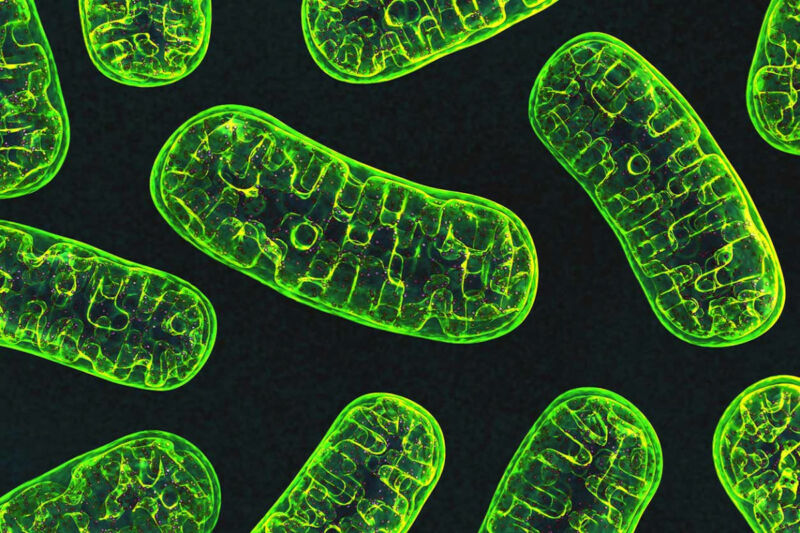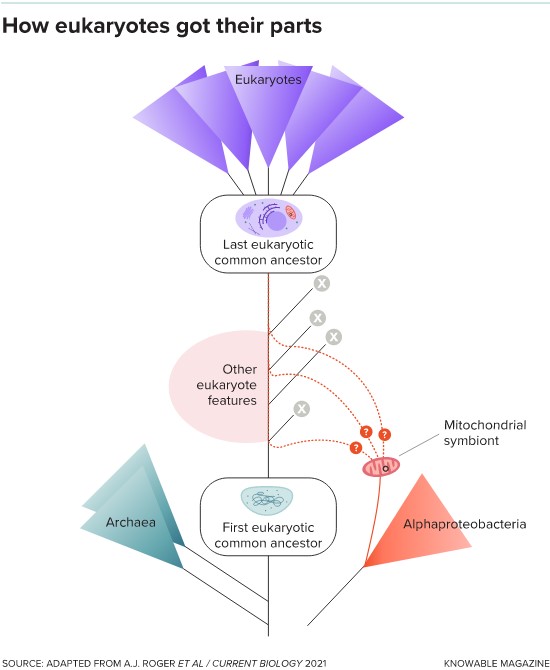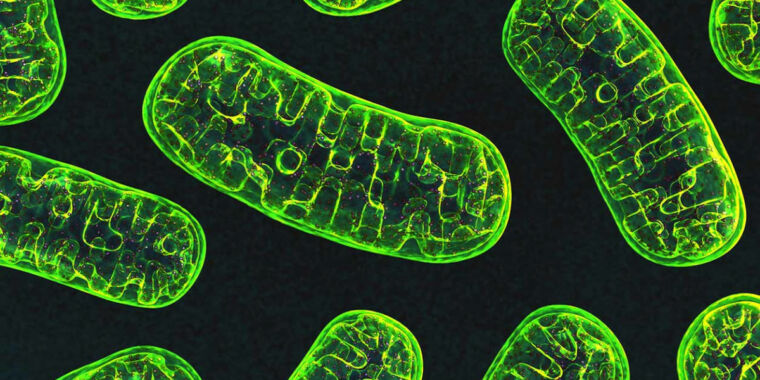
For billions of years after the origin of life, the only living things on Earth were tiny, primitive cells resembling today’s bacteria. But then, more than 1.5 billion years ago, something remarkable happened: One of those primitive cells, belonging to a group known as the archaea, swallowed a different one—a bacterium.
Instead of being digested, the bacterium took up permanent residence within the other organism as what biologists call an endosymbiont. Eventually, it integrated fully into its archaeal host cell, becoming what we know today as the mitochondrion, the crucial energy-producing component of the cell.
Its acquisition has long been viewed as the key step in what is arguably the most important evolutionary leap since the origin of life itself: the transition from early primitive cells, or prokaryotes, to the more sophisticated cells of higher organisms, or eukaryotes, including ourselves.
It’s a neat story you’ll find in most biology textbooks—but is it quite that simple? In the last few years, new evidence has challenged the notion that mitochondria played a seminal role in this transition. Researchers sequencing the genomes of modern-day relatives of the first eukaryotes have found many unexpected genes that don’t seem to come from either the host or the endosymbiont. And that, some scientists suggest, might mean that the evolution of the first eukaryotes involved more than two partners and happened more gradually than suspected.
Others don’t see a reason yet to abandon the theory that the acquisition of the mitochondrion was the spark that ignited the rapid evolution of eukaryotes—giving rise, eons later, to plants, animals, vertebrates, people. Fresh evidence from genomics and cell biology may help resolve the debate, while also pointing to knowledge gaps that still need to be filled to understand one of the foundational events in our own ancestry, the origin of complex cells.

Prokaryotic cells—modern-day bacteria and archaea—tend to be small and simple, with few internal structures. Eukaryotic cells such as those of modern-day plants and animals are much more sophisticated. They have many internal structures, or organelles, that carry out specific functions.
Mysterious extras
The mystery genes turned up in the last decade when researchers, including Toni Gabaldón, an evolutionary genomicist at the Barcelona Supercomputing Center, and his colleagues took advantage of today’s cheap gene-sequencing technology to explore the genomes of a wide range of eukaryotes, including several obscure, primitive, modern-day relatives of early eukaryotes.
They expected to find genes whose lineage traced back to either the archaeal host or the mitochondrial ancestor, a member of a group called the alphaproteobacteria. But to their surprise, the scientists also found genes that seemed to come from a wide range of other bacteria.
Gabaldón and colleagues hypothesized that the cellular ancestor of eukaryotes had acquired the genes from a variety of partners. Those partners could have been additional endosymbionts that were later lost, or free-living bacteria that passed one or a few of their genes to the ancestral host in a common process called horizontal gene transfer. Either way, the tango that led to eukaryotes involved more than two dancers, they suggested.
“It is clear now that there are additional contributions from additional partners,” says Gabaldón, who wrote about the early evolution of eukaryotes in the 2021 Annual Review of Microbiology.
It’s tough to know exactly where those ancient foreign genes came from because so much time has elapsed. But there are many more recent, looser endosymbioses where the origin of foreign genes is easier to identify, says John McCutcheon, an evolutionary cell biologist at Arizona State University in Tempe who wrote about endosymbiont evolution in the 2021 Annual Review of Cell and Developmental Biology. Studying these might, by analogy, give us a shot at understanding how mitochondria and the first eukaryotes could have evolved, he says.

Eukaryotes arose from primitive cells known as archaea that eventually acquired complex traits such as internal, membrane-bounded structures called organelles—but the exact sequence of events is poorly understood, and many species presumed to be intermediate stages (X) are now extinct. In particular, scientists are still debating whether the ancient symbiosis that led to mitochondria occurred early in the process—suggesting that it was a key trigger—or was a later refinement.








